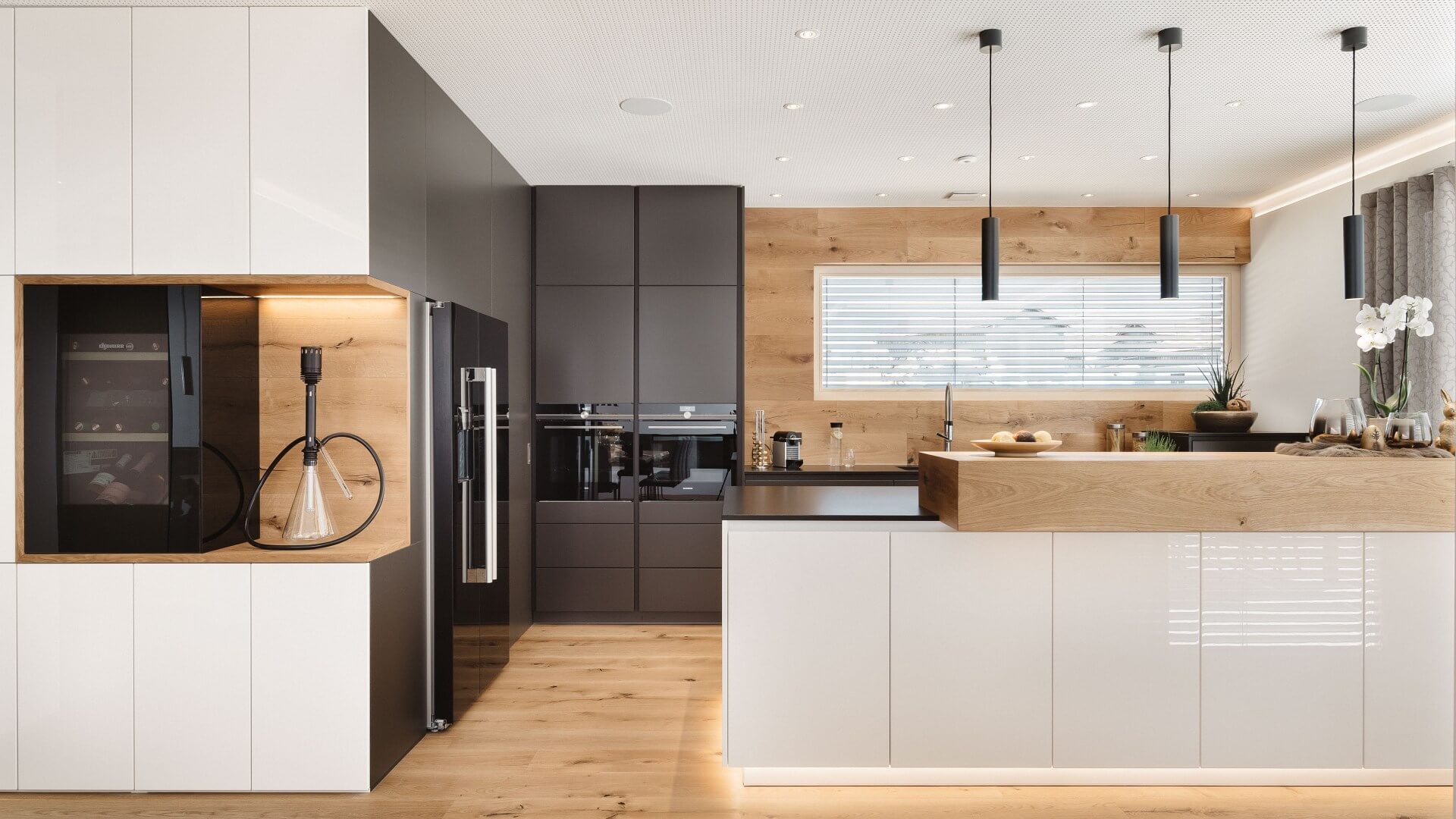
A Guide to Lighting Basics
Where do I start?
Before you start looking at where to place different light fittings in your home, we recommend that you go through each room and consider what your actual lighting requirements will be in that space. To do this, there are certain questions you should be asking yourself:
- What kind of room is it? Would it be one I’d be working in (like a study) or a recreational room (such as a living room)?
- What does the lighting need to do in this room? Does it need to fill the room with light or merely be a complementary design feature?
- Do I want to be able to switch between different lighting moods? Or will the option of a single light source be sufficient for me?
What light sources should I use in each room?
Once you’ve determined what lighting requirements you’ll have in each room, then you can start considering what type of light sources you can use to achieve this. For some inspiration, here are a few ideas of different lighting sources and what they can be used for:
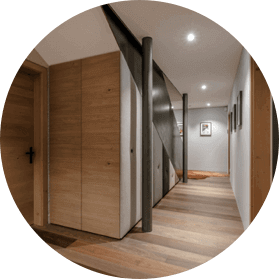
LED Spots
LED ceiling spots are a fantastic option for the main source of lighting in a room. These can meet the requirement of ambient light. Typically installed in a grid-style layout, they deliver focussed, direct lighting which would illuminate certain areas in a room or provide lighting over specific surfaces. For example, this could be in the kitchen, where you would want the lighting to fill the room and focused lighting over the worktops. If the spots are adjustable – in terms of brightness and colour – then this type of light source can also be used to create different lighting moods.
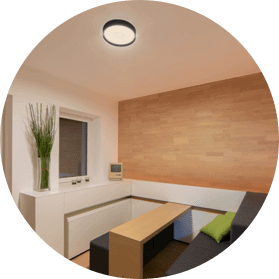
Ceiling Lights
As with ceiling spots, a ceiling light is a great source of ambient light. The difference between spots and the ceiling light is that the latter provides a softer, diffused light that’s still bright enough to fill a room. A single ceiling light would be sufficient to illuminate a smaller room up to 15m2. Again, as with ceiling spots, if the brightness level and colour of the ceiling light can be adjusted then this can be useful in creating different lighting moods. This is a great option of light for bedrooms, a home office, or a utility room, for example.

LED Spots
LED ceiling spots are a fantastic option for the main source of lighting in a room. These can meet the requirement of ambient light. Typically installed in a grid-style layout, they deliver focussed, direct lighting which would illuminate certain areas in a room or provide lighting over specific surfaces. For example, this could be in the kitchen, where you would want the lighting to fill the room and focused lighting over the worktops. If the spots are adjustable – in terms of brightness and colour – then this type of light source can also be used to create different lighting moods.

Ceiling Lights
As with ceiling spots, a ceiling light is a great source of ambient light. The difference between spots and the ceiling light is that the latter provides a softer, diffused light that’s still bright enough to fill a room. A single ceiling light would be sufficient to illuminate a smaller room up to 15m2. Again, as with ceiling spots, if the brightness level and colour of the ceiling light can be adjusted then this can be useful in creating different lighting moods. This is a great option of light for bedrooms, a home office, or a utility room, for example.
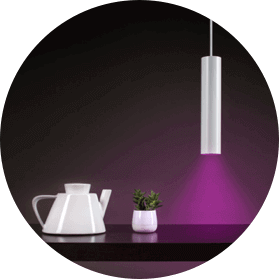
Suspended/Pendant Lighting
When it comes to accent lighting, opting for suspended/pendant lighting is a great choice. These types of fittings work well above the dining table, for example. For a bold statement, you could consider a cluster of pendant lighting in a double-volume space. More than just a light source, pendant fittings can also be a striking feature or a subtle complement to the interior design.
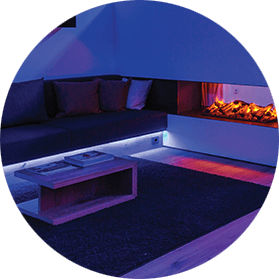
LED Strip
This is a brilliant lighting option that can meet the requirements of task lighting, and for some spaces it might even suffice as a source of ambient light. You can really be creative with the placement of this type of light source for that ‘wow’ effect. For example, place it behind the headboard or beneath the lip of hard furnishings such as kitchen cabinetry or behind a built-in mirror in the bathroom.

Suspended/Pendant Lighting
When it comes to accent lighting, opting for suspended/pendant lighting is a great choice. These types of fittings work well above the dining table, for example. For a bold statement, you could consider a cluster of pendant lighting in a double-volume space. More than just a light source, pendant fittings can also be a striking feature or a subtle complement to the interior design.

LED Strip
This is a brilliant lighting option that can meet the requirements of task lighting, and for some spaces it might even suffice as a source of ambient light. You can really be creative with the placement of this type of light source for that ‘wow’ effect. For example, place it behind the headboard or beneath the lip of hard furnishings such as kitchen cabinetry or behind a built-in mirror in the bathroom.
Looking for more inspiration for where and how to use different lighting sources in your home?
A quick look at different light types
LED
LEDs are the future of lighting. They are energy-efficient, have a long life and are exceptionally versatile as part of the lighting design for a home. For this reason, you’ll find innovative LED technology used in our entire smart lighting range.
Energy-saving bulbs
The Compact Fluorescent Lamp (CFL) is a common ‘energy-saving bulb’ and is usually available in the same shapes as its traditional incandescent forefather. While CFLs have long been a favourite alternative to incandescents, they aren’t always suitable as they may need to ‘warm up’ before they reach full brightness. They’re also not ideal for dimming or if you’re after a cooler white light. It’s worth noting that fluorescent lights are soon to be phased out in the UK with legislation being brought forward that will see the removal of fluorescent lights from shelves from September 2023.
Halogen
Halogen lights were the go-to for 50+ years however with them now being phased out and replaced by LEDs, they are now somewhat of an artefact. The good news is that LEDs outperform halogen lights in terms of energy efficiency and life expectancy – so it’s not really a loss.
Important light values
Once you know what light source and light type you should be looking for, then you can start looking at the individual values to ensure you end up with the correct version. These values denote how bright the light output is, the temperature of the white (warm, neutral or cool), how well the light source produces visible light, and how well a light allows us to see the true colour of objects as if they were illuminated by sunlight. With so many values to consider, where do you start? Here are a few descriptions and guidelines…
Light Output / Illuminance (Lux)
Illuminance is how much light reaches a specific point from a given light source and is measured with the unit ‘lux’. It essentially denotes the intensity of the light. By knowing what you’re likely to be using a space for, you’ll know how much light output you need. For example, in a study (with a typical 2.4m ceiling height) you would be using the desk for reading and writing, so you’d ideally be looking for a light source with 500lux for optimal output. In the kitchen, you’d be looking for 300lux whereas in bedrooms around 150lux would suffice.
Luminous Flux (Lumen)
Essentially, this is how bright the light is. Where you probably previously looked out for the Watts, you would now refer to the lumen. A light source measuring 1600lumen would roughly represent the same brightness as a traditional 100W incandescent bulb. So how many lumen do you need then? Well, this is where your smart home installer, lighting designer or architect would be able to give more accurate advice, but as a guideline, you’re looking for 500lumen for every 25 sq. feet.
Colour Rendering Index (CRI)
This 0 to 100 value indicates how well natural colours are reproduced when this light is shining on an object. Imagine looking at a bowl of fruit in the natural sunlight compared to beneath artificial light. To the naked eye, to get the exact same rendering of the colours that sunlight produces, you’d need a CRI of 100. For indoor lighting for your home though, a CRI of 80 and above is a perfectly suitable option – anything lower and you’ll notice that the colours are less vivid or rich.
Colour Temperature (Kelvin)
The so-called colour of the white light emitted is referred to as the ‘colour temperature’ and this value is represented in Kelvin (K). A ‘Warm White’ would be between 2500K and 3300K. You achieve a more neutral white light around 3500K. You start getting a ‘Cool White’ with a temperature between 3500-5000K. From 5500K upwards you’re entering the realms of light similar to daylight itself – ranging from the equivalent of the sun being overhead on a clear day, to an overcast sky.
Beam Angle
The beam angle gives an idea of what would be within the illuminated area of the emitted light. A beam angle of around 35° from a Warm White (WW) light suits most residential applications. If the light is a colour-changing one (RGBW) then look for a beam angle of around 100° as this allows you to have an overlapping beam angle – great for accent lighting to have a consistent illumination in a room.
Dimmability
Not all lights are dimmable, so if this is a requirement in the space then be sure to check that your chosen light sources are dimmable. Even if the light is only white as opposed to colour, then if it is dimmable this still gives you the option of creating different lighting moods in a room.
Energy Rating
Whether you’re after a light that is good for the environment or just cuts down on your energy bill – it’s a good idea to check the energy label. Not all ‘energy saving’ bulbs are equally efficient. We recommend seeking out lights that at least have a rating of ‘A’.

Want to start installing Loxone?
By becoming a Loxone installer you’ll be able to offer your customers a complete automation solution with intuitive control – suitable for smart homes, commercial premises and custom applications.

Want Loxone Installed?
Want smart lighting installed in your home? Then speak to one of our automation experts to get more information on what can be done specifically for your installation and to find an installer near you.